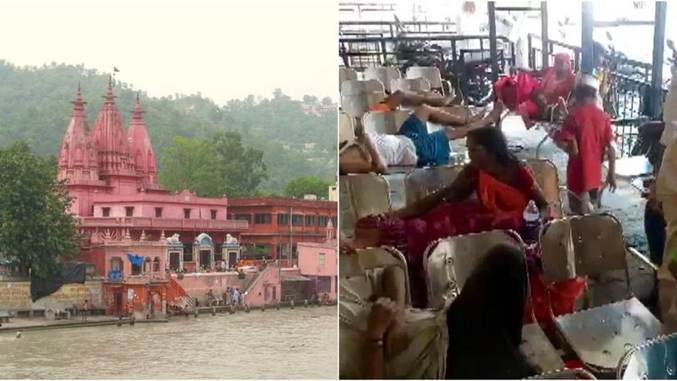What Happened
- Date & Time: Morning of July 27, 2025, around 9 a.m.
- Casualties: 8 killed, 30 injured in a stampede at Mansa Devi Temple, Haridwar.
- Cause (Preliminary): Rumour of a snapped electric wire triggered mass panic during peak footfall.
Relevance : GS 3(Disaster Management)

Geographic and Structural Context
- Location: Mansa Devi temple sits 1,770 feet above sea level in the densely forested Shivalik Hills of Uttarakhand.
- Access Path: Narrow stairways and barricaded routes became choke points.
- Weather & Terrain: Monsoon season + slippery pathways likely worsened crowd management challenges.
Demographics of Victims
- Victims aged between 12–60 years.
- Pilgrims hailed from Uttar Pradesh, Bihar, and Uttarakhand, indicating regional religious magnetism.
Administrative Failures
- No Real-Time Crowd Regulation: Absence of responsive crowd control personnel during critical congestion.
- Lack of Redundancy: No alternate escape paths; single staircase acted as both entry and exit.
- Failure in Risk Communication: The rumour about electric wire went unchecked, causing chaos.
Structural and Policy Dimensions
- Recurring Pattern: India has seen over 300 stampede deaths in religious places in the last two decades.
- Systemic Gaps:
- No unified National Religious Pilgrimage Safety Protocol.
- Lack of crowd simulation planning, tech-enabled footfall monitoring.
- Poor inter-agency coordination between local police, temple boards, and municipal authorities.
Way Forward
- Mandatory Crowd Management SOPs for high-footfall religious sites.
- AI-based surveillance systems for crowd density alerts.
- Training of temple volunteers in disaster preparedness.
- Legal obligation for religious trusts to conduct structural safety audits during festival periods.
- Pilgrim insurance tied to temple visit registration apps (like Char Dham portals).



